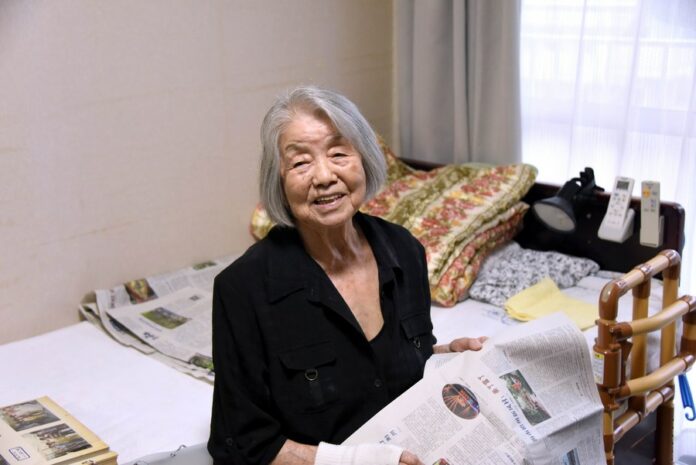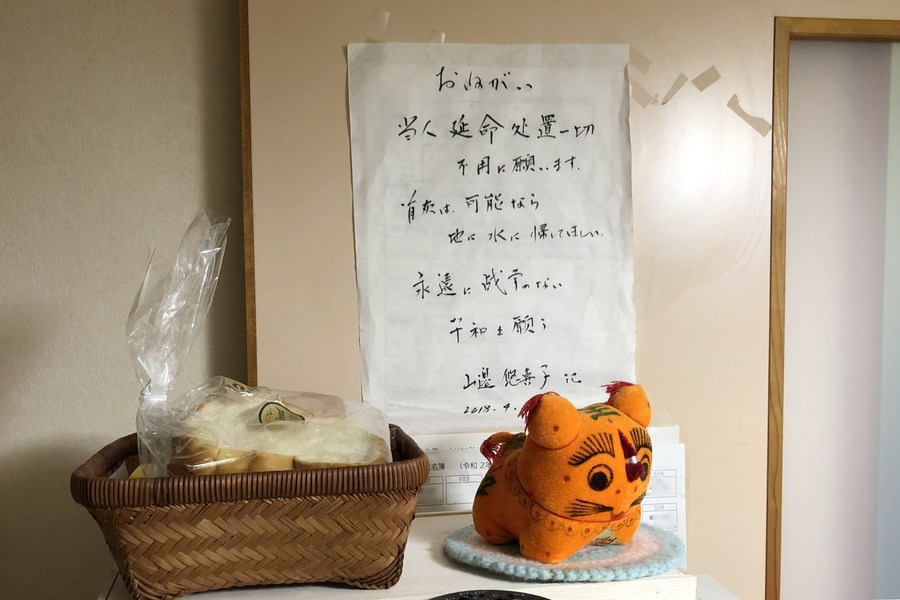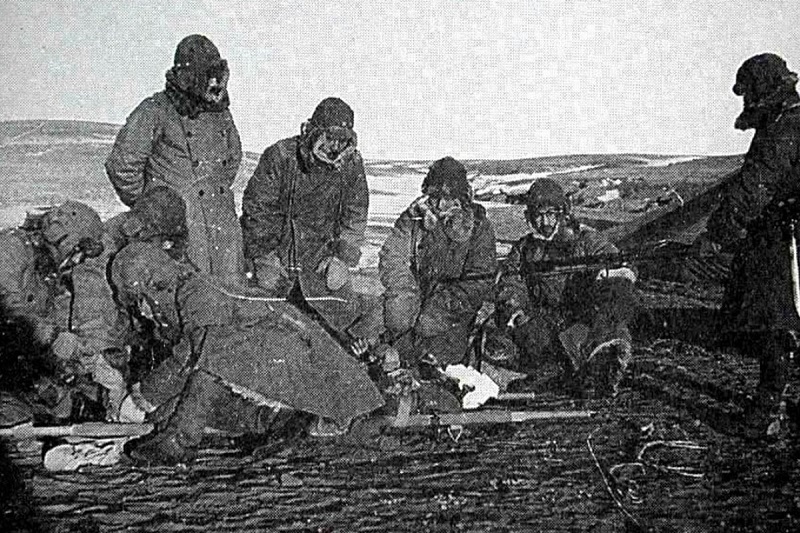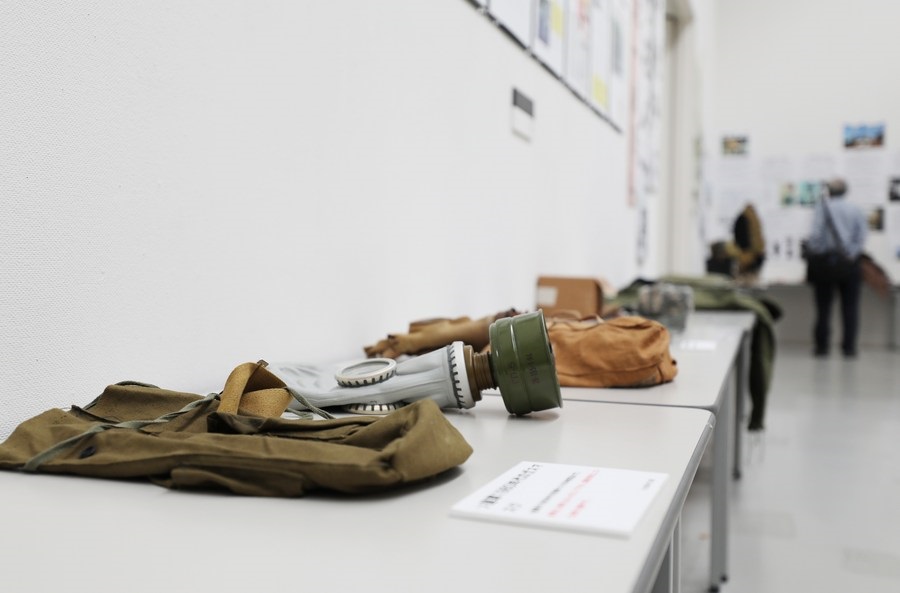
TOKYO (Xinhua) — “There was smoke everywhere. The whole sky was black. Bodies were hanging on power poles. I was young and I was screaming: ‘Dad, get that man off the pole and bring him home for me to look after.'”
That is what Yukiko Yamabe, a 91-year-old veteran of the Chinese People’s Liberation Army (PLA), told Xinhua in an interview. Born in Japan, she followed her father from Tokyo to work in Benxi, a city located in northeast China nearly 80 years ago. She still remembers the devastating gas explosion at the Benxi Lake coal mine.
According to records from the archives stored in Benxi City, on April 26, 1942, a gas explosion took place in the mine which was under the control of Japan’s invading troops, killing about 1,500 miners, marking the deadliest gas explosion in the history of the coal industry in the world.
Apart from 31 Japanese, the rest of the victims were all Chinese workers. It wasn’t until years later that Yamabe found out the truth about the explosion. “I never went back to the vicinity of Tokyo’s Yotsuya station, where the building of the Okura tycoon that had long occupied the Benxi Lake coal mine was located,” she said.

Although she did not understand Japan’s invasion of China at the time, Yamabe said she felt defeat at first after Japan’s surrender on Aug. 15, 1945. “My whole family did not know whether we can survive tomorrow,” she said. Her family managed to survive on the secret food delivery by the Chinese workers from her father’s company.
When the PLA in northeast China recruited personnel, Yamabe did not hesitate to sign up. “The Chinese people saved me. They need my help. I’m going,” she said.
“That was the happiest time of my life,” she showed her march map after joining the People’s Liberation Army. Yamabe, who had learned some basic medical knowledge, marched with the army through the whole country to treat the wounded in many battles.
“Were our troops armed? No. Was there any food? No. But everywhere we went we were welcomed by the local people. Why was that? Because wherever they went, the Chinese army stood with the people,” she said. The experience of helping farmers harvest and cook together with her comrades is now a fond memory of the veteran.
In 1953, Yamabe returned to Japan and earned a living doing odd jobs. As soon as she retired in 1984, she immediately contacted her instructor in the army then and went to work as a Japanese teacher at Norman Bethune University of Medical Science in Changchun, northeast China.

In 1990, a delegation from the Heilongjiang Provincial Academy of Social Sciences went to northeast China to conduct a field research on the 14-year history of Japan’s occupation of northeast China. Yamabe, who had long been concerned about this issue, signed up in the research.
During the research, she witnessed the ironclad proof of Japanese aggression against China and the inhuman crimes, and personally heard the victims’ testimony. “It’s so cruel. I couldn’t stop my tears. I was afraid to tell anyone, even my own daughter,” she said in tears.
Yamabe said she wanted more Japanese to know these historical facts and went to great lengths to uncover the heinous crimes committed by the Japanese troops in China.
She set up committees of exhibiting the criminal evidence of Japan’s Unit 731 with like-minded friends, dedicated to opposing nuclear weapons, germ warfare and poison gas warfare. They held dozens of crime exhibitions in Japan, introducing evidence of Japan’s Unit 731’s human experiments for germ warfare and other crimes to the Japanese people, and doing a lot of work for the development and protection of Unit 731’s criminal evidence sites.
“In order to better investigate the historical facts, Yamabe sold her house and spent her own money on more than 60 trips to China,” said Zhang Hongbo, a professor at Japan’s Meiji Gakuin University who has known her for more than 20 years.

Yamabe translated and published two books exposing Japan’s aggression against China, poison gas weapons, and proof of crimes committed by Unit 731.
She also devoted herself to investigating the Japanese troops’ abandoned chemical weapons. She actively helped the Chinese people injured by gas bombs claim compensation from the Japanese government, and negotiated with Japan’s Cabinet Office for compensation and apology to the Chinese victims for many times.
On July 9, 2011, Yamabe went to the historical sites of Unit 731 in China’s Harbin, where she set up “a monument of apology and peace without war.”
This “silly girl”, as her father called Yamabe, has spent nearly 40 years traveling around trying her best to let more Japanese people know the real history.
The 91-year-old posted a piece of paper on the wall in her home, reading “Please do nothing to prolong my life; If possible, please put my cremains in the earth or a river. I pray for eternal peace without wars.”















































